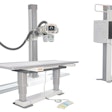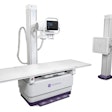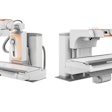Dear Digital X-Ray Insider,
Are radiologic technologists (RTs) receiving adequate radiation protection during interventional radiology procedures?
A new study aims to answer that question by taking a long-term look at radiation safety practices followed by RTs for fluoroscopically guided interventional procedures, starting in 1970. In a nutshell, the researchers found that interventional RTs of today are doing a better job of following radiation safety practices such as wearing lead aprons and radiation monitoring badges. But they're also performing more procedures -- which could negate the gains in radiation safety.
The article is this edition's Insider Exclusive, which you can read before the rest of the AuntMinnie.com membership.
In other news, a new study indicates that x-ray may be more appropriate than MRI as the first imaging tool to use in patients 40 years and older who have knee pain. Researchers found that even with MRI's power to resolve soft tissue, patients might be better off getting a weight-bearing x-ray first. Read more by clicking here.
Do emergency medicine providers really know all that they should about radiation safety? A new study from Emory University had some surprising findings -- get the rest of the story by clicking here.
And if you work for a vendor that develops digital x-ray systems, you'll want to know about a new regulatory guidance issued recently by the U.S. Food and Drug Administration for solid-state digital detectors used in digital radiography systems. The new document represents the first update to the guidelines since they were last issued in 1999. Find out what's new by clicking here.
These stories and more are available in your Digital X-Ray Community, at xray.auntminnie.com.



















